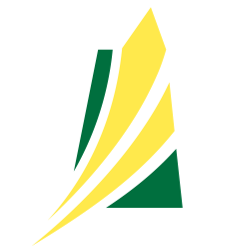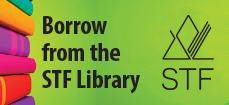Mechanical and Automotive 10, A20, B20, A30, B30
MECH14A
Module 14A: Automotive Suspension Systems (Optional)
Outcome
Diagnose, service and repair automotive suspension systems.
Indicators
| (a) | Identify and follow safe work practices (e.g., be aware of the dangers of welding or heating steering linkage components and be aware of spring tension) when working with automotive suspension systems, including maintaining a clean and organized work area. |
| (b) | Describe how different types of springs (e.g., leaf, coil, torsion bar and air) are used in automotive suspension systems. |
| (c) | Describe the operation of suspension components (e.g., shocks, struts, sway bars and ball joints) and their effects on vehicle stability. |
| (d) | Inspect and evaluate suspension component condition for damage, corrosion, wear and excessive play. |
| (e) | Diagnose and perform repair procedures (e.g., remove and replace parts in pairs, disassemble and reassemble a strut and spring assembly and replace ball joints) on automotive suspension systems using appropriate equipment (e.g., ball joint press and strut spring compressor). |
| (f) | Make preliminary wheel alignment adjustments after suspension components (e.g., struts and control arms) have been replaced. |
| (g) | Follow correct torqueing procedures for all suspensions systems fasteners and discuss how improper torqueing can be a safety issue. |
Loading...


R005156
Math for Automotive Technicians
This resource explores the practical application of mathematical skills in automotive mechanics. Case studies present practical problems for students to solve related to maintenance, chassis, engine mechanical, electrical, engine performance, driveline, air conditioning and hybrid technology. Although it does not directly address curricular outcomes, it does support many of the calculations necessary in testing situations. There are a number of Automotive Service Excellence type questions, which would be helpful to students interested in pursuing automotive mechanics as a career.
(More information)
•
Math for automotive technicians. Instructor's resource CD

R010007
Auto Fundamentals(12th ed.)
This textbook provides the fundamental theory behind most of the mechanical and automotive concepts identified in the modules of the curriculum. The resource has 29 chapters with clearly identified objectives supported by text, diagrams and photographs. Each chapter ends with a chapter summary, a list of technical terms, review questions and critical thinking questions. An index and glossary are included at the end of the resource as well as reference charts and tables. There are other components of this resource available such as a workbook and the correlating online subscription to the teacher and student resources.
(More information)

R012333
Auto Suspension and Steering(5th ed.)
This textbook acts as a service guide that focuses on suspension and steering systems and the servicing they require. A table of contents, index, glossary and reference tables and charts are provided. The images and diagrams provide visual support to explain the service procedures described. Notes and warnings highlight safety cautions that should be observed in performing certain operations. This text has digital resources available through a subscription as well as a companion workbook.

R037818
Modern Automotive Technology(9th ed.)
This textbook explores a wide range of information about modern automotive technology and is written in accessible language for high school students. The resource has 87 chapters that incorporate most of the course modules. Clear diagrams and graphics appear throughout the resource and a glossary of terms, reference charts and tables are included at the end. Every chapter contains tech tips, safety and service procedure reminders, suggested activities and review questions. This resource is available in both print and digital formats.
(More information)
•
Modern Automotive Technology. Instructor's Resource CD

R010086
Motorcycles. Fundamentals, Service, Repair(4th ed.)
This is a comprehensive textbook about the fundamentals of motorcycle service and repair. The information is divided into 24 chapters with photographs and graphics that support the text. The resource includes a summary, review questions and suggested activities that could be performed in the shop/lab environment. There is also a glossary of terms, conversion and diagnostic charts and an index.
•
Motorcycles. Lab Workbook: Fundamentals, Service, Repair

R100743
Today's Technician. Automotive Suspension and Steering Systems. Classroom Manual(7th ed.)
This classroom manual provides an in-depth explanation on the workings and structures of suspension and steering systems. It contains 14 chapters that explain the design variations in key components used by different vehicle manufacturers. Each chapter starts with an overview of what will be learned in the chapter and a list of relevant terms. A summary and review questions can be found at the end of each chapter. The text has accompanying images to assist with comprehension. There is a glossary of terms and an index at the end of the resource.
(More information)
•
Today's Technician. Automotive Suspension and Steering Systems. Shop Manual

R007730
Essential Automotive Tasks. Volume 1
This DVD consists of 10 video segments in which the host explains the tasks associated with alternator removal and installation, how alternators work, resurfacing a disk brake rotor, manual transmission and transaxle service, shock absorber removal and replacement, shock absorber operation, and cylinder leak testing.
R017636
Auto Collision Repair and Refinishing(2nd ed.)
This textbook provides comprehensive information about autobody and automotive repairs associated with collisions. Each of the 36 chapters has clearly written text and visual supports as well as a summary, activities and review questions.
•
Auto Collision Repair and Refinishing. Instructor's Resource CD

R104343
Electude
This online resource is a collection of units about different automotive components. The site is organized by topics that provide information, interactive review questions and animated or interactive visuals. The site also has quizzes related to the content of each unit.
Links :
Click here
Media and Formats :
Website
Price :
See publisher.
Record posted/updated:
June 16, 2022

R012423
Auto Engine Performance and Driveability. Workbook(5th ed.)
This workbook accompanies the textbook by the same name. It follows the same sequence of the chapters and contains review questions.

R009855
Automotive Technology. Principles, Diagnosis, and Service(6th ed.)
This comprehensive textbook is theory-based and focuses on the fundamentals of automotive technology. Each chapter outlines objectives, key terms and includes step-by-step photographs of some operations, review questions and a chapter quiz.

R024931
Automotive Technology: A Systems Approach(4th Canadian ed.)
This textbook is written at an appropriate level for high school students. Each chapter includes learning outcomes, warnings and cautions, service information, shop and performance tips, photo sequences of procedures, key terms, a chapter summary and review questions.


